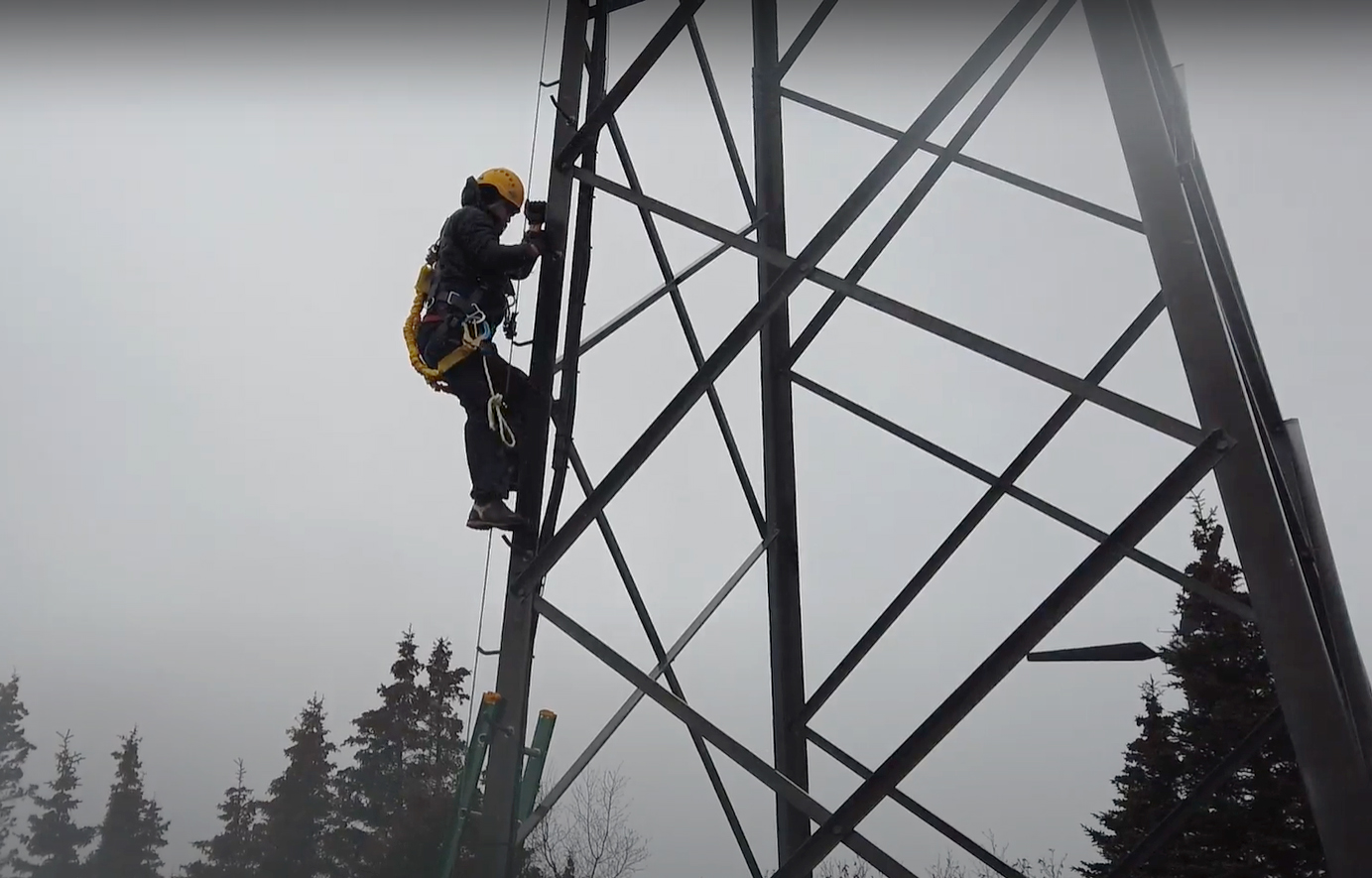Restoration of Kokhanok Wind-Diesel Microgrid

A successful energy project is one that has long-term production over the life of the system.
In 2012, a high-penetration wind-diesel system was commissioned in Kokhanok, Alaska. The system operated at 37% penetration for the first year but experienced operational challenges in subsequent years, resulting in the suspension of the wind-diesel operation. The community returned to using diesel for their power generation.
Penetration refers to the percentage of energy load met by a particular resource. It can be defined on an average basis, in terms of annual energy delivered/consumed, or an instantaneous basis, in terms of power delivered/consumed at any given point in time.
Despite the challenges, the community of Kokhanok, as well as the Lake and Peninsula Borough, have remained supportive of the renewable project and very interested in returning the system to full operation.
A collaborative effort, funded by the Office of Naval Research under the Alaska Regional Collaboration for Technology Innovation and Commercialization grant, is restoring the Kokhanok high penetration wind-diesel system to full operation.
ACEP has partnered with the Lake and Peninsula Borough, Kokhanok Village Council, Kokhanok Electric Utility, Intelligent Energy Systems, Utility Management Assistance and Deerstone Consulting. The partners plan to not only bring back the system but also simultaneously develop a real-world wind-diesel microgrid test bed. The test bed will study and advance methods to maximize the contribution of renewable energy sources to weak and islanded microgrids.
Intelligent Energy Systems engineers and technicians are currently on site in Kokhanok recommissioning the wind-diesel system to operate as a low- to medium-penetration system. Additional funding from the U.S. Department of Agriculture High Energy Cost Grant Program will support the procurement and delivery of a battery energy storage system in the upcoming year to enable high-penetration operation.
To ensure the continued success of energy systems, it is critical to have a locally trained workforce.
ACEP’s Robert Bensin has vast experience operating and maintaining wind farms in remote Arctic climates. Bensin, who helped construct and then became manager of Banner Peak Wind Farm in Nome, traveled to Kokhanok to provided tower safety and rescue training for wind turbine technicians.
The two-day training program included eight hours of classroom training and a full day of practice in equipment use, rope access, hands-on tower climbing and rescues.
Three Kokhanok community members completed the training and will help ensure the project’s success.
For more information on this project, please contact Mariko Shirazi at mshirazi@alaska.edu.
A Kokhanok resident climbs a wind turbine tower during the two-day training. Photo by Robert Bensin.


